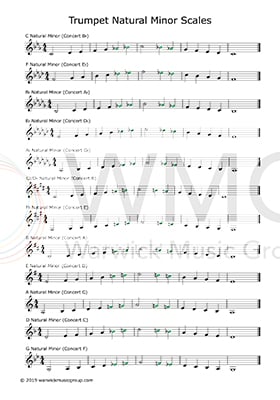

Because you play a transposing instrument it is also referred to as your C major scale. That’s a subtlety that will become increasingly important and which will help distinguish you as the one Trumpet player in your band who plays in tune. Just put it out about a half inch or one centimeter for the D then pull it right back in. Learn now to extend the 3rd valve slide for the low D. This scale will work for any instrument built in Bb (like clarinet, tenor sax, baritone Treble Clef etc.) The fingerings for Trumpet appear in tiny text above. The indicated guitar tuning applies to classical guitar, steel-string acoustic guitar, and electric guitar.Other Scales for Trumpet The Bb Major Scale for Bb Instruments

Notice the list above only shows the most common tuning for each instrument. The notes are written from lowest to highest, except for the ukulele and banjo that don't have strings ordered by pitch. Below is a list of common instruments and their tuning. You can use a tuner for all musical instruments. As you play a note on your instrument, adjust the pitch until the tuner indicates the note is in tune. You will be asked to allow access to your device’s microphone so the tuner can hear what you play. To tune your instrument, click the green microphone button. Most tuners are “chromatic tuners” and detect all 12 distinct notes. Over time, the strings loosen, and the instruments need to be tuned to maintain optimal sound. It's most common to use a tuner for string instruments such as guitars and violins. The tuner indicates whether the note is too high, too low, or in tune, helping musicians tune their instruments easily.

A tuner is a device that detects a note’s pitch when played on a musical instrument, and compares it to the desired pitch.


 0 kommentar(er)
0 kommentar(er)
